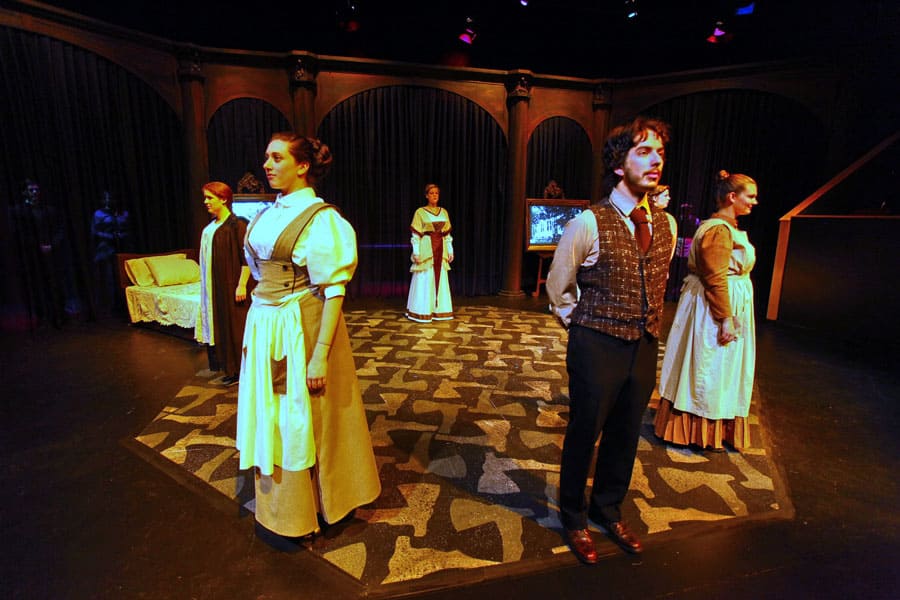
The Watercress follows the lives of sisters Emma and Lizzie Borden, beginning 12 years after the murders of their parents Andrew and Abbie Borden in Fall River, Massachusetts.
It was originally written as a screenplay, and retains a very cinematic flow. To support the fluidity of time and setting in the play, set pieces are simplified down to benches, chairs, tables, and beds, with uniform period style.
Setting is established with lighting, and is reinforced visually with a stylized method of projection. Two Victorian easels stand up-right and up-left in the space. Each displays a large picture frame. Throughout the show, the image in each frame changes to a period photo or lithograph pertinent to the current scene. The story remains narrative in this way, and we are always reminded that these sisters lived their lives as if on display in a museum or gallery.
The floor is painted with a textured tessellation of black, white, and gray hatchets. This is a constant reminder of the root of the action in the play, but pulled back to the point where most audience did not realize the motif was hatchets until about midpoint in the performance.







